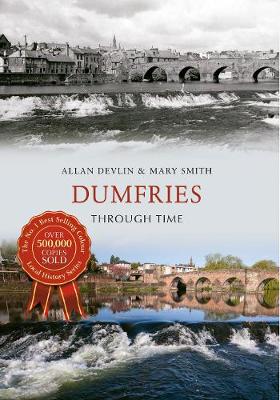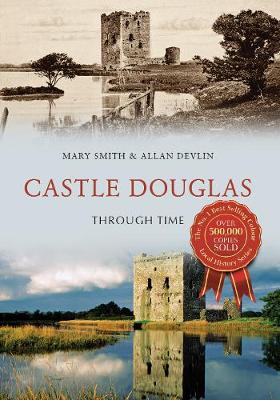Through Time
2 total works
Dumfries, a market town in south-west Scotland known as the Queen of the South, is the administrative capital of the Dumfries and Galloway region and has a population of almost 32,000. Dumfries has a turbulent and sometimes bloody history with links to the Roman occupation of Britain, Bonnie Prince Charlie’s failed Jacobite uprising, the colonisation of America and imperialism. Most famously Scotland’s bard, Robert Burns, spent his final years in Dumfries with many places in the town having connections to the poet. Its thriving port trade is now a thing of the past and although once one of the largest tweed producers in the world, it has never been a major industrial centre.
The photographs show that much has changed in Dumfries – not always for the better. Some of the photographs in this collection have special poignancy as many historical buildings have been demolished in the name of progress. Doonhamers are proud of their town and its history. Dumfries Through Time hopes to demonstrate the importance of the town’s built heritage and is essential reading for anyone interested in the history of Dumfries.
The photographs show that much has changed in Dumfries – not always for the better. Some of the photographs in this collection have special poignancy as many historical buildings have been demolished in the name of progress. Doonhamers are proud of their town and its history. Dumfries Through Time hopes to demonstrate the importance of the town’s built heritage and is essential reading for anyone interested in the history of Dumfries.
The market town of Castle Douglas, beside Carlingwark Loch in the southern Scottish region of Dumfries and Galloway, is relatively new, though the area has been inhabited from prehistoric times and the Romans had a military base close by. In the fourteenth century, Archibald the Grim, the 3rd Earl of Douglas, built Threave Castle nearby.
The town came into being thanks to fertiliser found in the loch and wealthy merchant William Douglas, who laid out the present town in 1792. Though his dream of creating a cotton industry failed, Castle Douglas became a flourishing market town. The opening of the rail line to Dumfries in 1859 improved the town's connections.
Though the railway closed in 1965, the A75 trunk road ensured the town's survival as a major stopping point for travellers. Today, it is a major tourist destination, with many visitors using it as a base for exploring this beautiful part of Scotland. All these changes are recorded in this unique and fascinating series of new and old photographs, making this book essential reading for anyone interested in the history of Castle Douglas.
The town came into being thanks to fertiliser found in the loch and wealthy merchant William Douglas, who laid out the present town in 1792. Though his dream of creating a cotton industry failed, Castle Douglas became a flourishing market town. The opening of the rail line to Dumfries in 1859 improved the town's connections.
Though the railway closed in 1965, the A75 trunk road ensured the town's survival as a major stopping point for travellers. Today, it is a major tourist destination, with many visitors using it as a base for exploring this beautiful part of Scotland. All these changes are recorded in this unique and fascinating series of new and old photographs, making this book essential reading for anyone interested in the history of Castle Douglas.

